There are reasons you may want to edit your Facebook ad destination URL by placement. It’s an option that helped me dig deeper into some suspicious results, and I wanted to share the experience with you.
When an ad suddenly shifted in performance, I took a closer look and noticed that a high percentage of traffic was going to the Audience Network placement. That, by itself, may not be a problem. But I’m a longtime skeptic of the placement, so I wanted to dig deeper.
The campaign in question was using several placements, so I was unable to isolate the traffic from Audience Network. And since you can’t run a campaign exclusively to Audience Network (you have to also select at least a Facebook feed placement), some additional trickery was necessary.
Let’s walk through those steps so that you can run different URLs by placement, too.
Create a URL with UTM Parameters
UTM parameters alter an original link for tracking purposes. This additional code doesn’t change the destination of the URL, but it tags a URL so that you can learn more about the behavior of people who clicked that specific link.
An easy way to do this is to use the Google URL builder. After entering the original URL that you want to alter, you need to provide a campaign source, medium, and name.
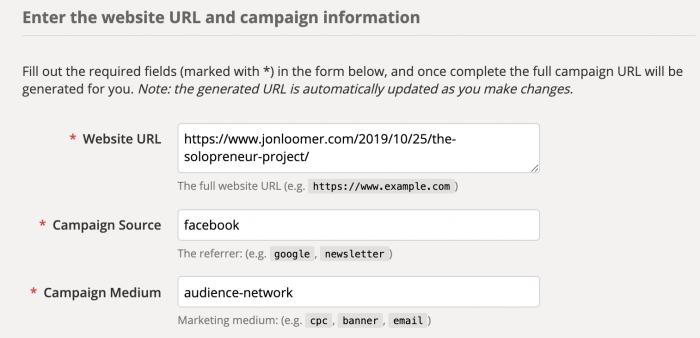
Understand that you can’t really screw up with the information you use here. It’s all for your own purposes only. I provided my own examples above, but Google provides suggestions, too.
When you’re done, Google spits out a URL that you can use.
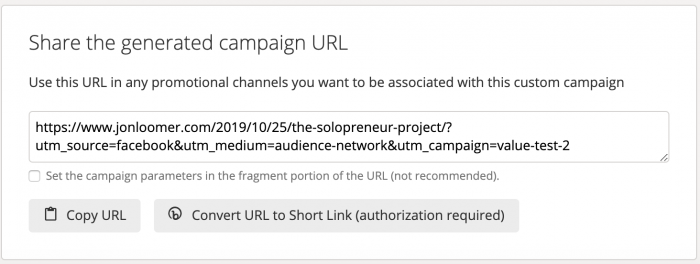
Everything after the “?” is what you added.
Edit URL by Placement
In the example above, I altered a URL that is specifically for the Audience Network placement. So, we’ll want to be sure that those who get this link will see it there.
At the ad level, you can choose to customize by placement.
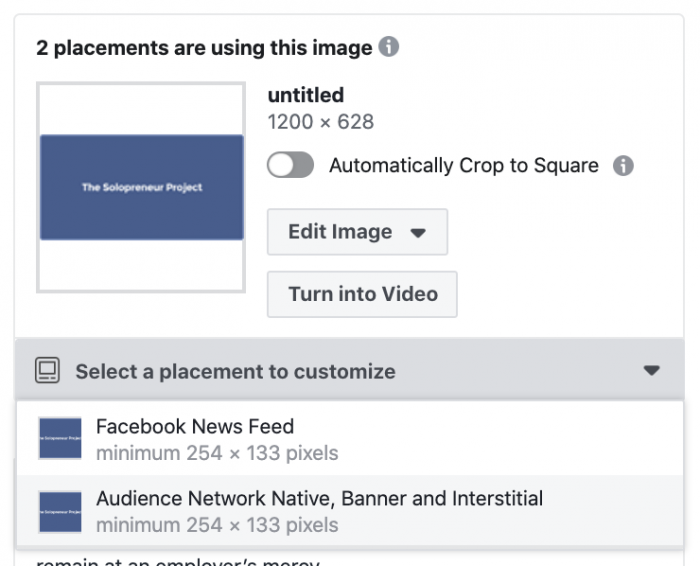
Since I was using only two placements, I only have two options. After selecting “Audience Network Native, Banner and Interstitial,” I get a dialog that looks like this…
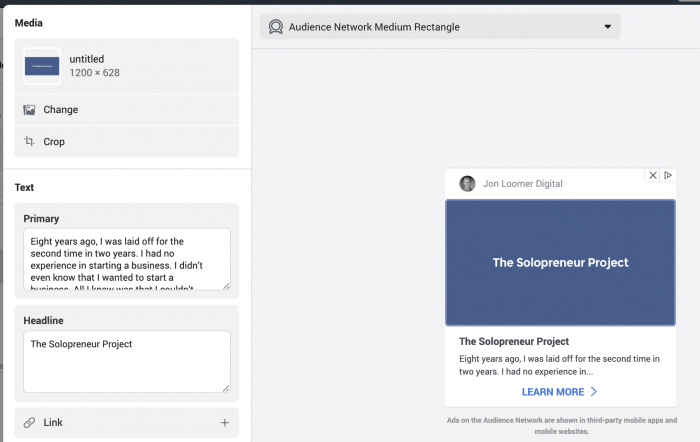
You can customize the image, text, headline, and link. Well, we want to customize the link. After clicking the “+” button by the link, you can edit it.
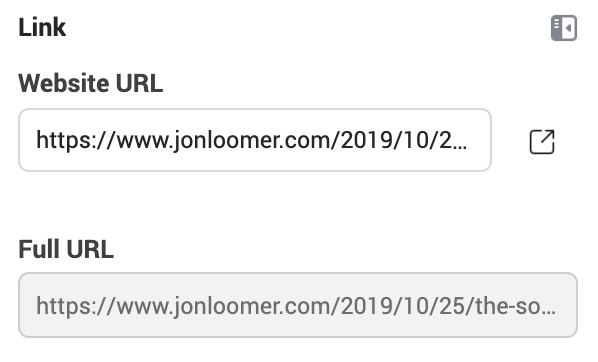
After entering the URL you generated with the URL Builder, click to save.
Facebook URL Builder
Note that Facebook offers a URL builder within the ad creation process. And it may actually be an easier way to accomplish this (hat tip to Darian Scott for pointing this out).
When entering the main URL of an ad, there is a link for “Build a URL parameter.”
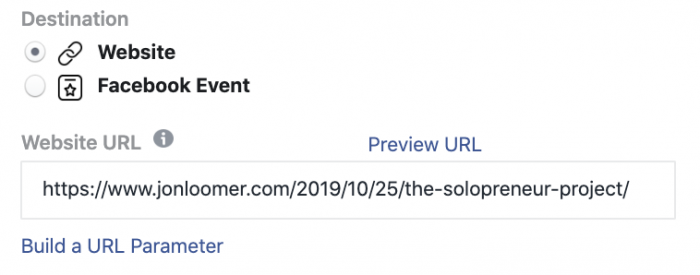
When you click that, you get an experience that is a lot like the Google URL Builder.
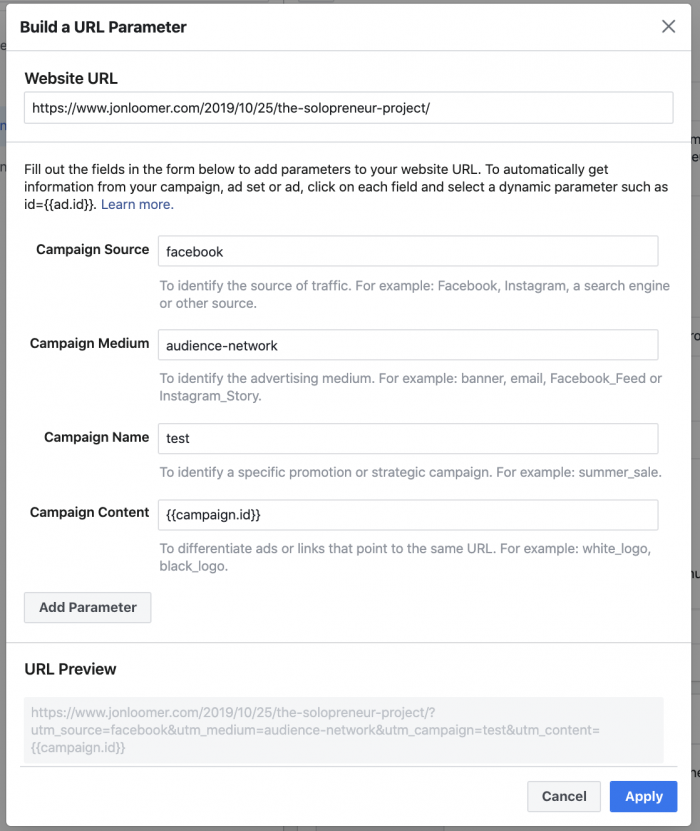
You can have a parameter generated dynamically by any of the following:
- Campaign ID
- Ad Set ID
- Ad ID
- Campaign Name
- Ad Set Name
- Ad Name
- Placement
- Site Source Name
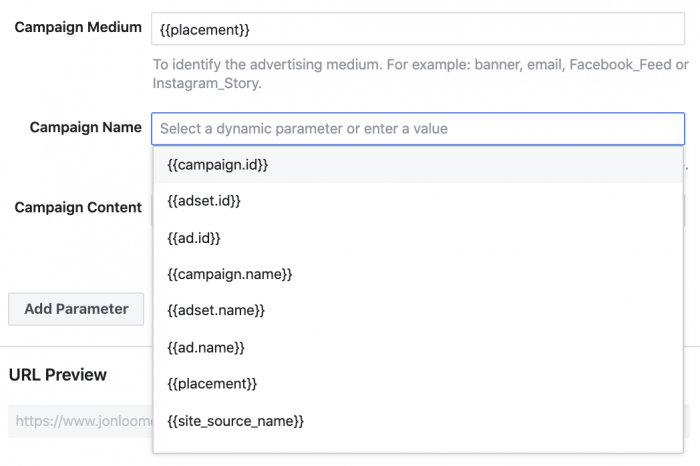
Of course, for our purposes, we’d just select “Placement.”
Track in Google Analytics
I’m going to assume that you use Google Analytics. Within Google Analytics, click “All Campaigns” under the Acquisition section.
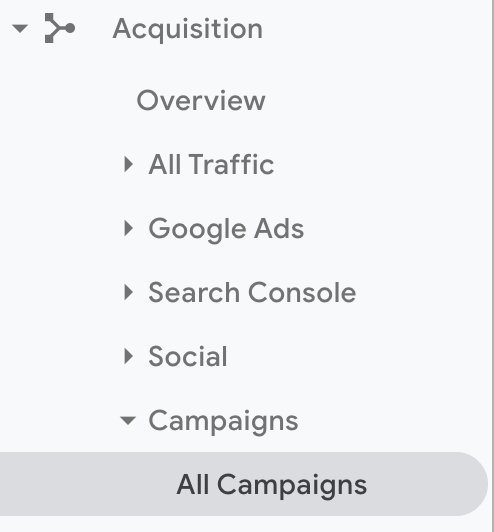
You can view your results by Campaign, Source, or Medium. I want to view by Medium to pick up a couple of campaigns that I edited URLs by placement.

We can now see the quality of the visits of those visiting after clicking from the Audience Network placement.

While 143 users is not a large sample size, a 16-second duration at about 8 seconds per page would not be considered a high-quality visit! I compared other visits via mobile and referred by Facebook, which averaged over a minute.
UTM Parameters Aren’t Perfect
While some advertisers alter URLs with UTM parameters religiously for tracking and testing purposes, I don’t do this all that often. The reason is that this method does have its weaknesses.
Understand that when someone clicks on this link and views it on their phone, they can then share it. When shared, it will be the altered link that includes UTM parameters. So, when friends see the link, it will also include those UTM parameters, even though they are unlikely to view it as an Audience Network placement.
That said, barring something crazy (like someone very popular sharing the link), the vast majority of traffic will come from those who viewed it from the intended placement. Given the low quality of traffic I saw, I’d consider it very unlikely that many, if any, users spent the time to share that link.
Your Turn
Of course, you can do this for other reasons, too. Maybe you want to send desktop viewers and mobile viewers to completely different landing pages. This could make some sense given the different experiences and amount of information you should expect from people from different devices.
Do you alter URL by placement or see reasons to do this?
Let me know in the comments below!






